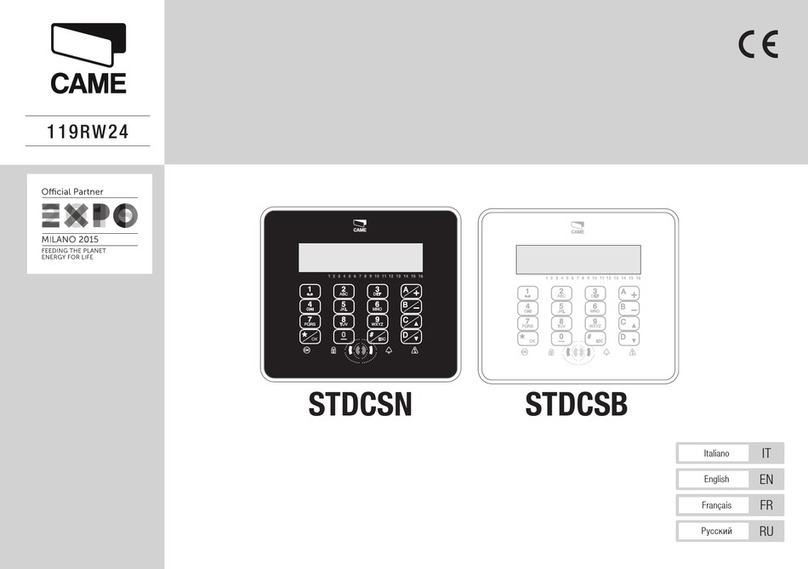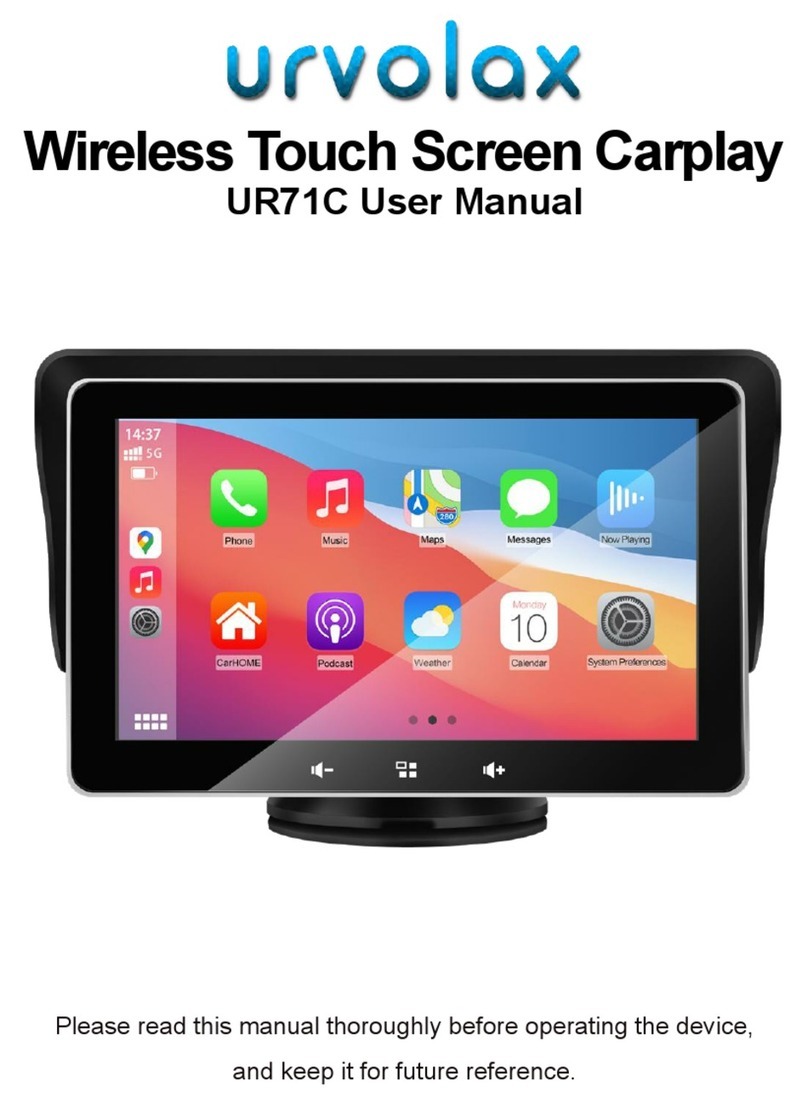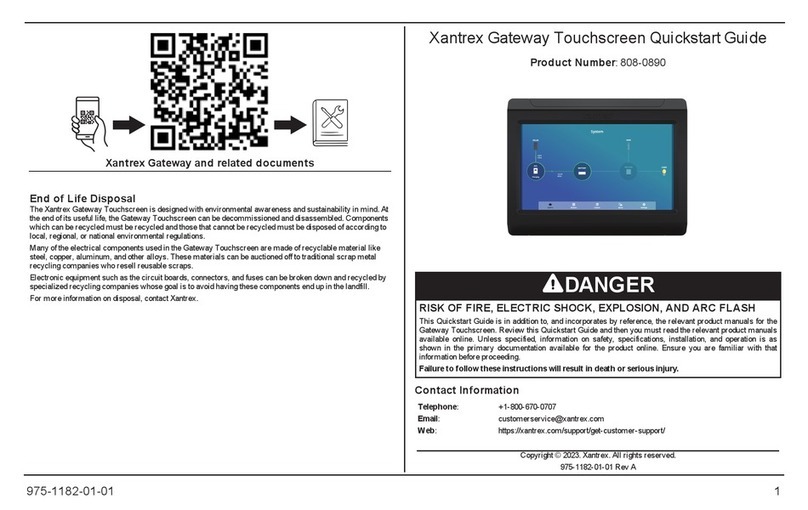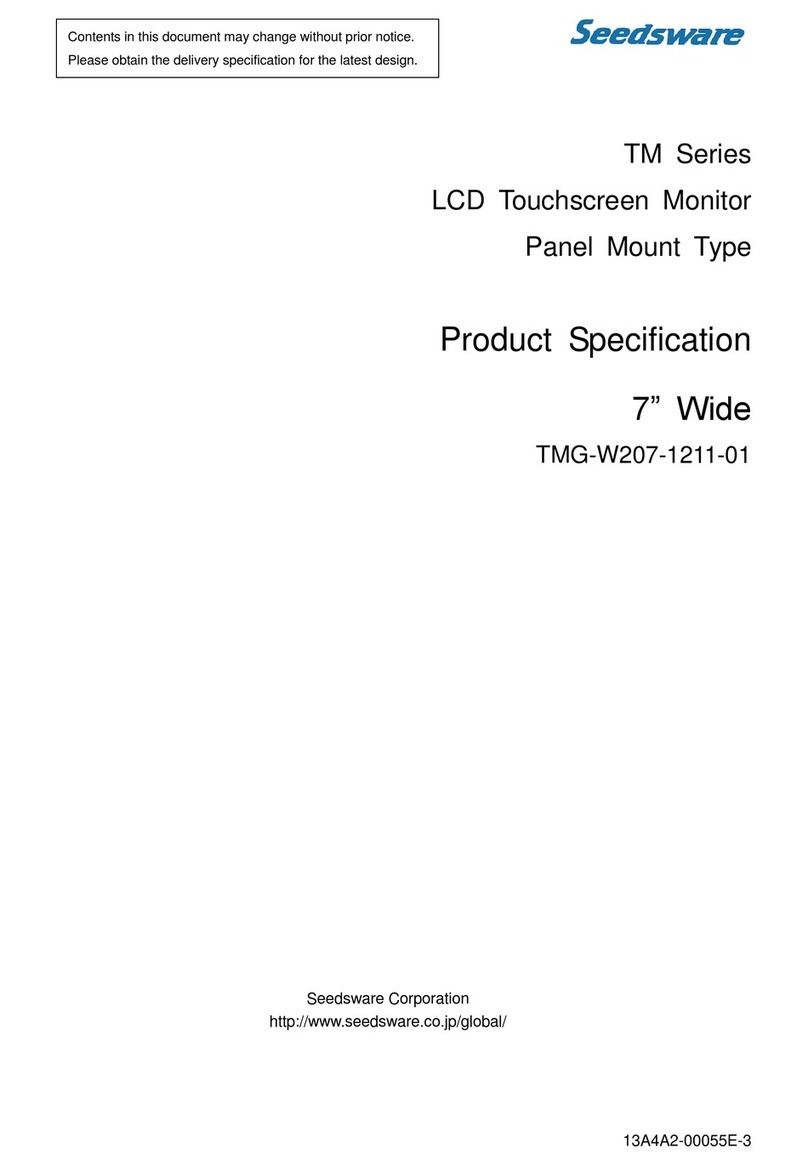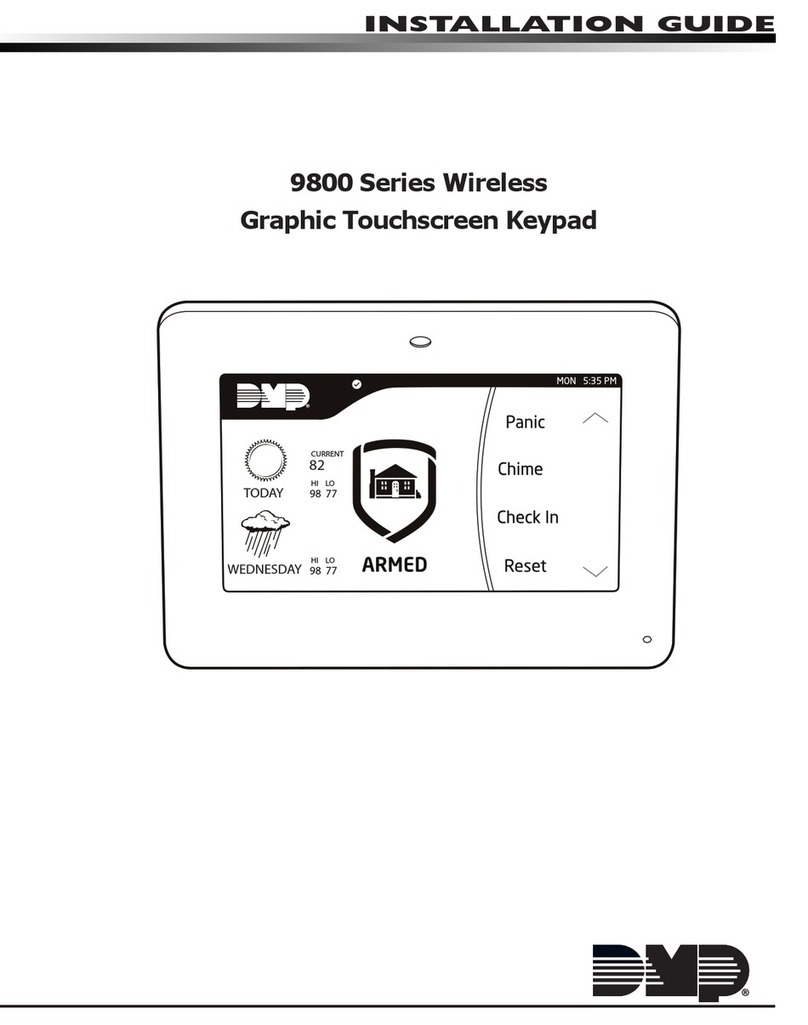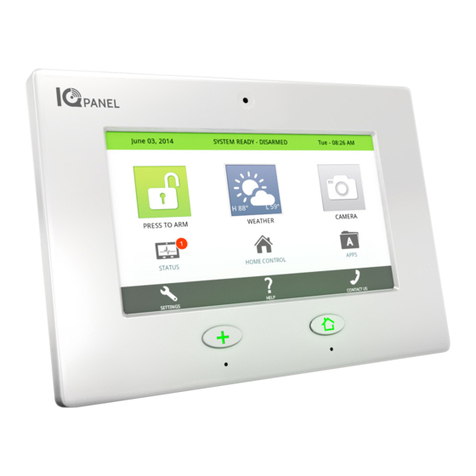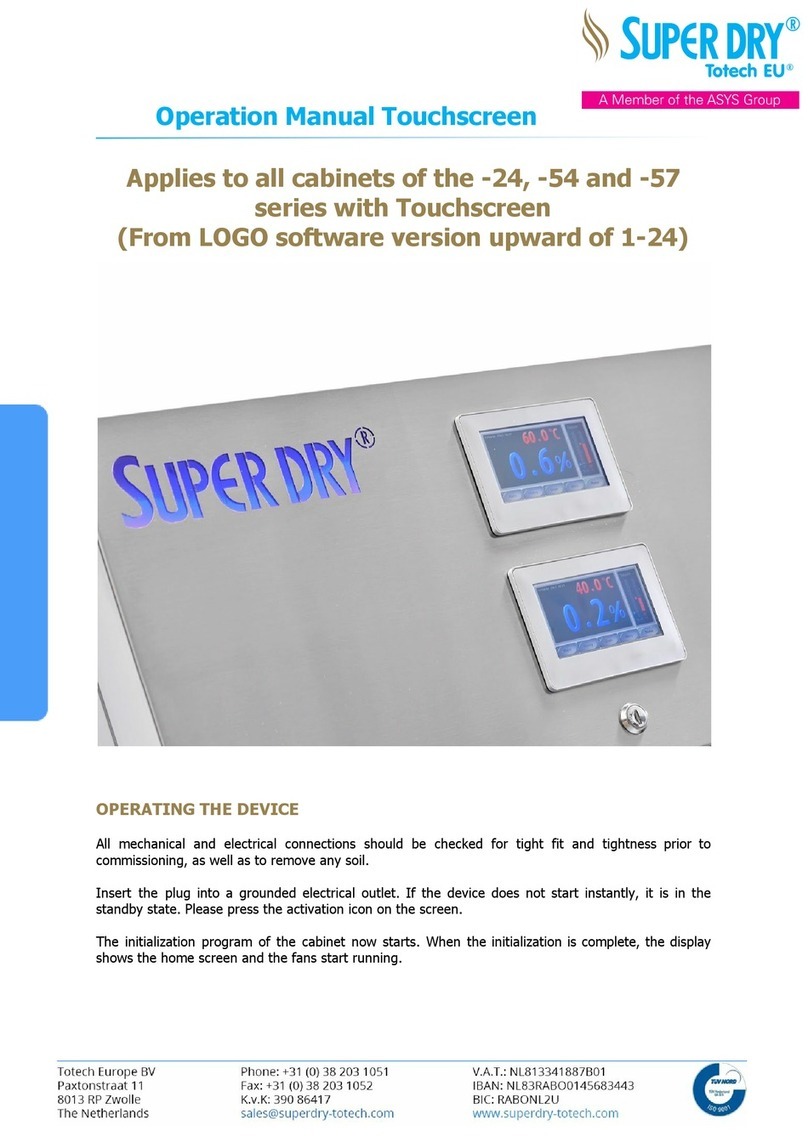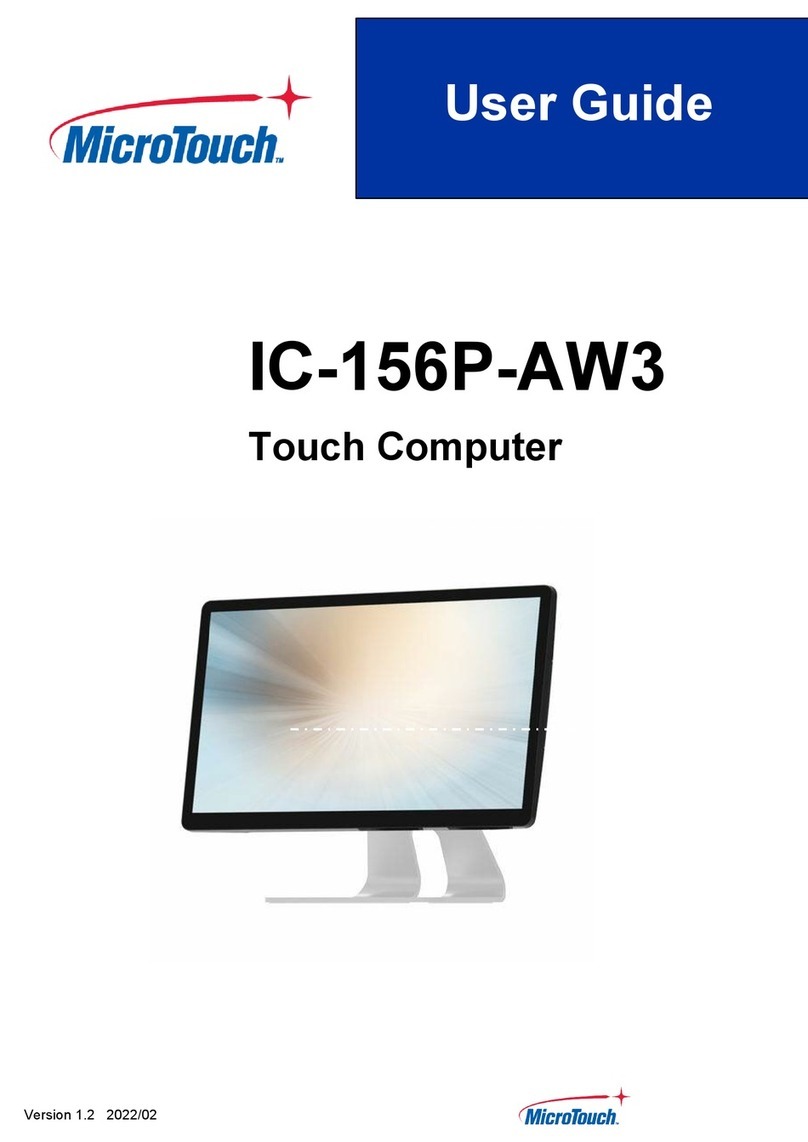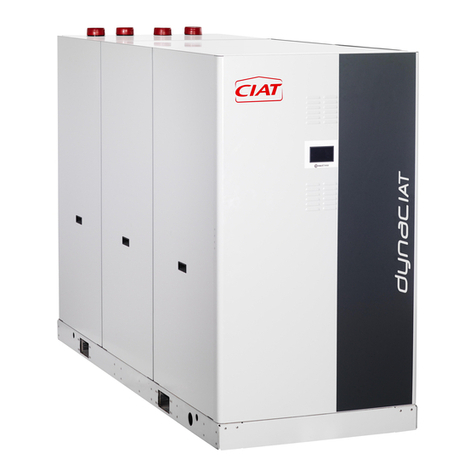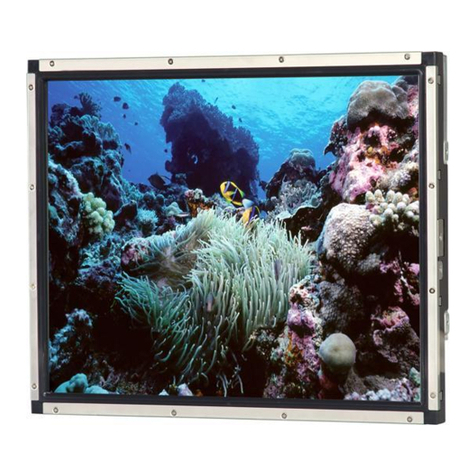Pro-face LT series User manual

LT Series
User Manual
Digital Electronics Corporation

LT Series User Manual 1
1. It is forbidden to copy the contents of this manual, in whole or in part,
except for the user’s personal use, without the express permission of Digital
Electronics Corporation of Japan.
2. The information provided in this manual is subject to change without notice.
3. This manual has been written with care and attention to detail; however,
should you find any errors or omissions, please contact Digital Electronics
Corporation and inform us of your findings.
4. Please be aware that Digital Electronics Corporation shall not be held liable
by the user for any damages, losses, or third party claims arising from any
uses of this product.
Thank you for purchasing the Pro-face Graphic Logic Controller LogiTouch
(hereby referred to as “LT” or “LT unit”).
Please read this manual carefully; it explains, step by step, how to use the LT
correctly and safely.
Preface
< Note >
All Company/Manufacturer names used in this manual are the registered trade-
marks of those companies.
© Copyright 2004, Digital Electronics Corporation

LT Series User Manual2
Table of Contents
Preface........................................................................................................................ 1
Essential Safety Precautions ................................................................................... 5
General Safety Precautions ................................................................................... 11
About LT Series Models ........................................................................................ 13
Package Contents ................................................................................................... 13
UL/c-ULApplicationNotes .................................................................................... 14
CE Marking Notes................................................................................................ 15
CNS Notes ............................................................................................................... 15
Documentation Conventions .................................................................................. 16
SoftwareCompatibilityList ................................................................................... 17
CHAPTER 1 INTRODUCTION
1.1 Prior to Operating the LT...................................................................1-1
1.2 System Design .....................................................................................1-2
1.2.1 SystemDesign.......................................................................1-2
1.2.2 ProductLineup......................................................................1-5
1.3 Accessories ..........................................................................................1-8
CHAPTER 2 SPECIFICATIONS
2.1 General Specifications........................................................................2-1
2.1.1 Electrical................................................................................2-1
2.1.2 Environmental ........................................................................2-2
2.1.3 Structural...............................................................................2-2
2.2 Functional Specifications....................................................................2-3
2.2.1 Display ..................................................................................2-3
2.2.2 Memory.................................................................................2-4
2.2.3 ControlMemory....................................................................2-4
2.2.4 Clock.....................................................................................2-4
2.2.5 ExternalInterfaces.................................................................2-4
2.3 Interface Specifications ...................................................................... 2-7
2.3.1 Serial Interface (Type C).......................................................2-7
2.3.2 Flex Network Interface (Type B/Type B+/Type C) ..............2-9
2.3.3 Input/OutputConnectorInterface
(Type A1/Type A2/Type B+) .............................................2-10
2.4 Part Names and Functions................................................................2-19

LT Series User Manual 3
2.5 Dimensions.........................................................................................2-23
2.5.1 LT ExternalDimensions .....................................................2-23
2.5.2 InstallationFasteners ...........................................................2-25
2.5.3 PanelCutDimensions..........................................................2-25
CHAPTER 3 INSTALLATION AND WIRING
3.1 Installation ...........................................................................................3-1
3.1.1 InstallationProcedures ..........................................................3-1
3.2 WiringCautions ...................................................................................3-6
3.2.1 Connecting the Power Cord..................................................3-6
3.2.2 Grounding..............................................................................3-8
3.2.3 FlexNetwork CommunicationCable....................................3-9
3.2.4 I/OSignalLineCautions .......................................................3-9
3.2.5 Installation Cautions ...........................................................3-10
3.3 Tool Connector...................................................................................3-13
3.3.1 SerialPrinterConnection ....................................................3-13
CHAPTER 4 DATA TRANSFER
4.1 Data Transfer Cable ...........................................................................4-1
4.2 Transferring Screen Data...................................................................4-2
CHAPTER 5 OFFLINE MODE
5.1 Entering OFFLINE Mode .................................................................5-1
5.1.1 After Plugging in the Power Cord .........................................5-2
5.1.2 From the Menu Bar...............................................................5-2
5.2 OFFLINE Mode - Main Menu ..........................................................5-4
5.3 INITIALIZATION...............................................................................5-5
5.4 SELF-DIAGNOSIS .............................................................................5-7
CHAPTER 6 INITIALIZING THE LT
6.1 Initialization Screen............................................................................ 6–1
6.2 Initialization Items............................................................................. 6–2
6.3 SYSTEM ENVIRONMENT SETUP ............................................... 6–3
6.3.1 SYSTEM SETUP ................................................................ 6–3
6.3.2 CHARACTER STRING DATA SETUP.............................. 6–4
6.4 SET UP I/O .......................................................................................... 6–7
6.4.1 SET UP SIO ........................................................................ 6–7
6.4.2 COMMUNICATION SETUP............................................. 6–8

LT Series User Manual4
6.4.3 SET UP TOUCH PANEL.................................................... 6–9
6.4.4 DISPLAYSETUP.............................................................. 6–12
6.5 OPERATION ENVIRONMENT SETUP...................................... 6–13
6.5.1 SET UP OPERATION ENVIRONMENT........................ 6–13
6.5.2 CONTROLLER SETTINGS............................................. 6–14
6.6 INITIALIZE INTERNAL MEMORY ......................................... 6–16
6.7 SET UP TIME................................................................................... 6–16
6.8 SET UP SCREEN ............................................................................. 6–17
6.9 FONT SETTING .............................................................................. 6–18
CHAPTER 7 RUN MODE AND ERRORS
7.1 RUN Mode......................................................................................... 7–1
7.1.1 After Connecting the Power Cord ....................................... 7–1
7.1.2 Via OFFLINE Mode ........................................................... 7–2
7.2 Troubleshooting .................................................................................. 7–3
7.2.1 PossibleProblems ................................................................ 7–3
7.2.2 NoDisplay ........................................................................... 7–4
7.2.3 No LT / Host Communication .............................................. 7–7
7.2.4 Touch Panel Does Not Respond.......................................... 7–9
7.2.5 Cannot ExecuteLogic Program ......................................... 7–10
7.2.6 Clock Settings Cannot be Entered ..................................... 7–10
7.2.7 Error Screens ..................................................................... 7–10
7.3 SELF-DIAGNOSIS .......................................................................... 7–11
7.3.1 SELF-DIAGNOSIS ITEM LIST ...................................... 7–11
7.3.2 SELF-DIAGNOSIS - Details............................................ 7–12
7.3.3 CONTROLLER SELF-DIAGNOSIS.............................. 7–14
7.4 Error Messages................................................................................ 7–15
7.4.1 Error Message List ............................................................. 7–15
7.4.2 Error Messages - Details.................................................... 7–17
CHAPTER 8 MAINTENANCE
8.1 Regular Cleaning................................................................................ 8–1
8.1.1 CleaningtheDisplay............................................................. 8–1
8.1.2 Installation Gasket Check /Replacement............................. 8–1
8.2 Periodic Check Points ........................................................................ 8–3
8.3 Replacing the Backlight .................................................................... 8–3
INDEX

LT Series User Manual 5
Preface
This user manual contains a variety of safety markings for safe and correct opera-
tion of the LT unit. Please read this and any related manuals carefully to fully
understand the correct and safe usage of the LT and its features.
Safety Symbols
Please pay attention to the following safety symbols and their meanings:
Indicates situations that will definitely
result in severe bodily injury, death, or
major machine damage if the instructions
are not followed.
Indicates situations that may result in severe
bodily injury, death, or major machine
damage if the instructions are not followed.
Indicates situations that may result in minor
bodily injury or damage to the machinery if
the instructions are not followed.
DANGER
WARNING
CAUTION
Essential Safety Precautions
When Designing your LT System:
• Be sure to design your LT control system so that, in the
event of a main power supply failure or an LT accident, the
user system’s overall safety integrity will be maintained. If
this is not done, incorrect output signals or an LT malfunc-
tion may cause an accident.
(1) Interlock and other circuits designed to interrupt or op-
pose normal machine movement (such as Emergency
Stop, General Protection, and forward and reverse rota-
tion), as well as those designed to prevent machine dam-
age (such as upper, lower, and traverse movement limit
positioning) should all be designed to be located out-
side of the LT.
DANGERS

Preface
LT Series User Manual
6
(2) When the LT generates a “Watchdog Timer Error,” LT
operation will halt. Also, when Errors occur in Input/
Output control areas that the LT cannot detect, unex-
pected movement may occur in those areas. Therefore,
and to prevent unsafe machine movement, a “Failsafe
Circuit” should be created which is completely external
to the LT. Section 3.2.5 – “Installation Cautions”
(3) If a problem arises with an external unit’s relay or tran-
sistor that causes an output (coil) to remain either ON
or OFF, a major accident can occur. To prevent this, be
sure to set up external watchdog circuits that will moni-
tor vital output signals.
• Design a circuit that will supply power to the LT unit’s
I/O unit before starting up the LT. If the LT unit’s internal
program enters RUN mode prior to the I/O unit’s load con-
trol power turning ON, an incorrect output (signal) or mal-
function could cause an accident.
• Design a user program that ensures the safety of the user’s
system, in the event of an LT display or control error, or
either a data transmission error or power failure between
the LT and a connected unit. These types of problems can
lead to an incorrect output (signal) or malfunction, result-
ing in an accident.
• Do NOT use the LT as a warning device for critical alarms
that can cause serious operator injury, machine damage,
or production stoppage. Use stand-alone hardware and/or
mechanical interlocks to design alarm indicators and their
control/activator units.
• Do NOT use LT touch panel switches to perform operator
safety-related or important accident-prevention operations.
These operations should be performed by separate hard-
ware switches to prevent operator injury and machine dam-
age.
DANGERS

LT Series User Manual 7
Preface
• Design your system so that equipment will not malfunction
due to a communication fault between the LT and its host
controller. This is to prevent any possibility of bodily injury
or material damage.
• The LT is not appropriate for use with aircraft control de-
vices, medical life-support equipment, central trunk data
transmission (communication) devices, or nuclear power
control devices, due to their inherent requirements of ex-
tremely high levels of safety and reliability.
• When using the LT with transportation vehicles (trains, cars,
and ships), disaster and crime prevention devices, various
types of safety equipment, and medical devices that are
not life-support related, use redundant and/or failsafe sys-
tem designs to ensure the proper degree of reliability and
safety.
• Unlike the LT unit’s “Standby Mode,” after the LT unit’s back-
light burns out, the touch panel is still active. If the opera-
tor fails to notice that the backlight is burned out and
touches the panel, a potentially dangerous machine opera-
tion error can occur. Your backlight is burned out if:
• your LT is not set to “Standby Mode” and the screen has
gone blank
• your LT is set to “Standby Mode,” but touching the screen
does not cause the display to reappear
To prevent an accidental machine operation error, Pro-face
recommends that you use the LT unit’s “USE TOUCH PANEL
AFTER BACKLIGHT BURNOUT” feature, to automatically
detect a burnout and disable the touch screen.
Section 6.4.3 – “Set Up Touch Panel”
DANGERS
WARNINGS

Preface
LT Series User Manual
8
Installation Warnings:
• High voltage runs through the LT. To prevent an electrical
shock, do NOT disassemble the LT for any reason other
than to replace the backlight.
• Do NOT modify the LT unit. Doing so may cause a fire or an
electrical shock.
• Do NOT use the LT in an environment where flammable
gases are present. Doing so may cause an explosion.
Wiring Warnings:
• To prevent electrical shock or equipment damage, unplug
the LT unit’s power cord from the power supply prior to
installing or wiring the LT.
• After completing any LT wiring work, be sure the terminal
block’s protective plastic cover is reattached. If this cover
is not reattached, an electrical shock could easily occur.
• High voltage runs through the LT. Except for changing the
backlight, do NOT attempt to open the LT, since there is a
possibility of an electrical shock.
• Do NOT use power levels with the LT that are higher or
lower than the LT unit’s specified power range. Doing so
may cause a fire, electrical shock, or LT damage.
• Do NOT operate or store the LT in areas where flammable
gases are present and may cause an explosion.
Operation and Maintenance Warnings:
• NEVER touch a live power terminal. Doing so could cause
an electrical shock or a machine malfunction.
• To prevent an electrical shock, unplug the LT unit’s power
cord before either cleaning the LT or attaching/detaching
the power terminal attachment screws.
• When replacing the LT unit’s backlight, be sure to unplug
the unit’s power cord to prevent an electrical shock, and
wear safety gloves to prevent burns.
WARNINGS

LT Series User Manual 9
Preface
• The LT uses a lithium battery to back up its internal clock
and to control memory data. If the battery is incorrectly re-
placed (reversed positive [+] and negative [-] ends), the bat-
tery may explode. Therefore, Pro-face recommends that you
contact your local LT distributor for instructions before re-
placing or changing the battery.
• Do not attempt to modify the LT unit’s internal parts or wir-
ing in any way, since this may lead to either electrical shock
or fire.
Wiring Layout Cautions:
• To prevent an LT unit malfunction due to excessive noise,
isolate all LT input/output signal lines from all power wir-
ing or power cables via a separate wiring duct.
Installation Cautions:
• To reduce the risk of incorrect input or output signals, be
sure that any data cables attached to the LT unit’s connec-
tor make full contact with the connector pins.
General Wiring Cautions
• To prevent electrical shocks or malfunctions, be sure the
LT unit’s FG (earth) wire is grounded as follows:
(1) maximum grounding resistance: 100 ΩΩ
ΩΩ
Ω
(2) minimum grounding wire diameter: 2mm2
• The LT unit’s wiring should be checked to confirm that both
the operating voltage and wiring terminal locations are cor-
rect. If either the voltage or the wiring terminal location is
incorrect, it can cause a fire or accident.
• Be sure to secure all wiring terminal screws with the des-
ignated torque. Screws and terminals that become loose
can cause a short circuit, fire, or accident.
CAUTIONS
WARNINGS

Preface
LT Series User Manual
10
• Be sure that metal filings or wiring remnants do not fall
inside the LT, since they can cause a fire, accident, or mal-
function.
LT Operation and Maintenance Cautions
• Be sure to read the LT unit’s manual and online help infor-
mation carefully before performing program changes, en-
tering forced output, or using the RUN, STOP, or PAUSE
commands while the LT is in operation. Mistakes concern-
ing the use of these items can cause a machine accident or
damage.
• The liquid crystal panel contains a powerful irritant. If, for
any reason, the panel is damaged and this liquid enters
your eyes, flush your eyes for 15 minutes with running water
and contact a physician immediately.
LT Unit Disposal Cautions
• The LT unit should be disposed of in a manner appropriate
to, and in accordance with, the user country’s industrial
machinery disposal standards.
CAUTIONS

LT Series User Manual 11
Preface
General Safety Precautions
• Do NOT strike the touch panel with a hard or pointed object, or press on
the touch panel with too much force, since it may damage the touch
panel or the display.
• Do NOT install the LT where the ambient temperature can exceed the
allowed range. Doing so may cause the LT to malfunction or shorten its
operation life.
• Do NOT restrict or limit the LT unit’s naturally-occurring, rear-face ven-
tilation, and do NOT store or use the LT in overheated areas.
• Do NOT store or use the LT unit in areas where large, sudden tempera-
ture changes can occur. These changes can cause condensation to form
inside the unit, which can cause possible unit malfunctions.
• Do NOT allow water, liquids, metals, or charged particles to enter inside
the LT unit’s outer casing, since they can cause either an LT malfunc-
tion or an electrical shock.
• Do NOT store or use the LT in direct sunlight, or in excessively dusty or
dirty environments.
• Do NOT store or use the LT in an environment where shaking or exces-
sive vibration can occur.
• Do NOT store or use the LT where chemicals (such as organic solvents
and acids) can evaporate, or in environments where chemicals and ac-
ids are present in the air.
Corrosive chemicals: acids, alkalines, liquids containing salt
Flammable chemicals: organic solvents
• Do NOT use paint thinner or organic solvents to clean the LT.
• Do NOT store or operate the LCD display in areas that receive direct
sunlight, since the sun’s ultraviolet (UV) rays may cause the quality of
the LCD to deteriorate.
• Storing this unit in areas at temperatures that are lower than is recom-
mended in this manual’s specifications may cause the LCD panel’s liq-
uid to congeal, which may damage the panel. Conversely, if the storage
area’s temperature becomes higher than the allowed level, the LCD
panel’s liquid will become isotropic, causing irreversible damage to the
LCD. Therefore, be sure to store the panel only in areas where tempera-
tures are within the ranges specified in this manual.
• Due to the possibility of unexpected accidents, be sure to back up the
LT unit’s screen data regularly.

Preface
LT Series User Manual
12
About the LT Unit’s Display Panel
• The data that is currently displayed on the LT unit's screen, the screen’s
brightness, and the LT unit’s voltage*1 each affect the screen’s intensity
of Contouring — a wavelike pattern that is created when some parts of
the screen are brighter than others.
• The minute, dark and light grid-points on the display panel’s surface is
part of the LT unit’s design and are not defects.
• Extended shadows, or “Crosstalk”, may appear on the sides of screen
images. This is normal for an LCD panel.
• Sometimes the display area may look as if the display colors have
changed. This is a common attribute of LCDs and is not a defect.
• Displaying a single image for long periods of time can cause an afterim-
age to remain when the screen display is changed.
To prevent this effect:
Use the LT unit’s “Standby Mode,” which automatically turns the
screen OFF when no input is entered within a specified period of
time.
Section 6.3.1 – “System Setup”
• Write “FFFFh” to the System Data Area’s “Screen Display Off” address*2
to turn the screen display OFF when the following actions are not per-
formed within the user-specified period of time.
• Change Screen
• Touch Screen
• Alarm Display
Do NOT display any single screen for a long period of time. Try to
change the screen display periodically.
1Operating the LT unit in the lower range of its allowable operating voltage may
affect the intensity of contouring.
2 The following addresses assume all System Data Area settings are entered. If they
are not all entered, the correct word address may be different, since the following
addresses are relative, not fixed, addresses.
With the Direct Access Method — use System Data Area word address +9
With the Memory Link Method — use System Data Area word address +12
LT Editor Device Connection Manual (included with the LT Edi-
tor software)/GP-PRO/PBIII Device/PLC Connection Manual
(included with the C-Package software)

LT Series User Manual 13
Preface
Package Contents
Installation Fasteners
(4/set)
Installation Guide (1)*1
LT Unit (1)
The LT Series refers to the following LT model numbers:
About LT Series Models
Please verify that the LT unit’s packing box contains all the items listed below.
Special care and attention have been given to the packaging of this LT unit. How-
ever, if any of the items are damaged or missing, please contact your local LT
distributor immediately for prompt service.
1The LT Series User Manual (this manual) is sold separately.
Installation
Guide
Installation Gasket (1)
Flex Network I/F Connector (1)
(Included with LT Type B/B+/C/LTC
Type B+ units only)
Name Model Description
LT Type A1 GLC150-BG41-XY32SK-24V
LTC Type A1 GLC150-SC41-XY32SK-24V
LT Type A2 GLC150-BG41-XY32SC-24V 16-pointInputSink/Source and 16-pointtransistor
OutputSource type
LT Type B GLC150-BG41-FLEX-24V Flex NetworkI/F
LT Type B+ GLC150-BG41-XY32KF-24V
LTC Type B+ GLC150-SC41-XY32KF-24V
LT Type C GLC150-BG41-RSFL-24V Flex NetworkI/F and SIOI/F
LT Series
16-pointInputSink/Source and 16-pointtransistor
OutputSink type
16-pointInputSink/Source and 16-pointtransistor
OutputSink, and Flex NetworkI/F type

Preface
LT Series User Manual
14
The GLC150-**41-****-24V units are UL/c-UL listed products. (UL file No. E214883),
however the GLC150-BG41-XY32KF-24V/GLC150-SC41-XY32KF-24V are listed with
file no. E182139.
These units conform as products to the following standards:
UL 508, Industrial Control Equipment
UL 1604, Electrical Equipment for use in Class 1 & 2 – Division 2, or Class 3
Hazardous Locations.
CAN/CSA-C22.2, No. 1010-1
(Safety requirements for electrical equipment for measurement, control and laboratory use)
GLC150-BG41-XY32SK-24V (UL Registration Model: 2980036-01)
GLC150-SC41-XY32SK-24V (UL Registration Model: 3280027-11)
GLC150-BG41-FLEX-24V (UL Registration Model: 2980036-02)
GLC150-BG41-RSFL-24V (UL Registration Model: 2980036-03)
GLC150-BG41-XY32SC-24V (UL Registration Model: 2980036-04)
GLC150-BG41-XY32KF-24V (UL Registration Model: 3080060)
GLC150-SC41-XY32KF-24V (UL Registration Model: 3280027-12)
<Cautions>
• The LT unit must be used as a built-in component of an end-use product.
• The LT unit must be installed with the front face facing outwards.
• If this unit is installed so as to cool itself naturally, be sure to install it in a
vertical panel. Also, be sure that the LT unit is mounted at least 100 mm away
from any adjacent structures or equipment. If these requirements are not met,
the heat generated by the LT unit's internal components may cause the unit to
fail to meet UL/c-UL standard requirements.
• Separate the LT unit's power and signal lines from the main power supply via
double or reinforced insulation.
UL1604 Conditions of Acceptability and Handling Cautions:
1. Power, input and output (I/O) wiring must be in accordance with Class I,
Division 2 wiring methods - Article 501- 4(b) of the National Electrical Code,
NFPA 70 within the United States, and in accordance with Section 18-152 of
the Canadian Electrical Code for units installed within Canada.
2. Suitable for use in Class I, Division 2, Groups A, B, C and D, Hazardous
Locations.
3. WARNING: Explosion hazard - substitution of components may impair suit-
ability for Class I, Division 2.
4. WARNING: Explosion hazard - when in hazardous locations, turn power OFF
before replacing or wiring modules.
5. WARNING: Explosion hazard - do not disconnect equipment unless power has
been switched OFF, or the area is known to be free of hazards.
UL/c-UL Application Notes

LT Series User Manual 15
Preface
The GLC150-BG41-****-24V units comply with the following CNS standards:
•CNS 13438 (Class A)
<Caution>
The LT is an Industrial Device (Class A Device). Home use of this device may
cause radio wave interference with nearby devices. If interference does occur,
please try a variety of countermeasures to solve the problem.
CNS Notes
CE Marking Notes
The GLC150-**41-****-24V units are CE marked products that conform to EMC
directives EN55011 class A and EN61000-6-2.
Conformance Standards to EMC Directives
The EN61000-6-2 standard requires that products connected to an unprotected DC
line have 500V resistance (normal mode/common mode) in accordance with the
61000-4-5 surge test.
However, note that the power supply for the DIO of the LT unit is designed on the
assumption that it is connected to a protected DC power-supply line. Therefore,
the surge test included in this specification is inapplicable.
This LT unit’s 24V Power Input for DIO is not equipped with protection against
lightning surges. Therefore, it is not lightning surge resistant. To make your LT
unit or system compliant with EMC directives, connect the LT unit to surge
protected power, and set up surge resistance for your LT unit or overall system.
For example, when an LT unit mounted to a control panel is supplied DC24V
power in accordance with the EMC directive, this LT unit’s input side is protected
from power surges.

Preface
LT Series User Manual
16
The list below describes the documentation conventions used in this manual.
Documentation Conventions
Symbol Meaning
Indicates important information or procedures that must be
followed for correct and risk-free software/device operation.
LT or
LT unit LT Type A1/Type A2/Type B/Type B+/Type C,
LTC Type A1/Type B+
LT Editor Indicates the LT Editor software.
C-Package Indicates Screen Creation software GP-PRO/PBIII and Logic
Program Development software Pro-Control Editor.
External
Device Indicates peripheral devices (such as Temperature Controllers,
Inverters, etc.), but does not include Flex Network and DIO units.
*1 Provides useful or important supplemental information.
Provides useful or important supplemental information.
Cross-references to useful or important supplemental
information.

LT Series User Manual 17
Preface
The LT Series of operator interfaces can use either of the following software
packages to create both screens and logic programs.
• GP-PRO/PBIII C-Package03 or later
• LT Editor
However, the LT color-type operator interfaces must use the GP-PRO/PBIII C-
Package03 or later software. LT Editor software cannot be used.
Also, for LT Type B+ Series units, the LT Editor version must be 1.04 or higher.
Please be sure to read the following table prior to creating your screens and logic
programs, as the software that can be used will vary depending on the type of unit.
Software Compatibility List
Model Number LT Editor C-Package03 or later
GLC150-BG41-XY32SK-24V OO
GLC150-SC41-XY32SK-24V XO
GLC150-BG41-XY32SC-24V OO
GLC150-BG41-FLEX-24V OO
GLC150-BG41-XY32KF-24V
O
(Version 1.04 or later) O
GLC150-SC41-XY32KF-24V XO
GLC150-BG41-RSFL-24V OO

LT Series User Manual 1–1
Use the following steps when creating projects for the LT unit.
1. Preparation – Before using the LT, be sure that you have all required hard-
ware, and have read all specification, wiring, and installation
information.
Chapter 2 – “Specifications” and Chapter 3 – “Installation and
Wiring”
2. Design – Design your LT screens and create a logic program.
3. Install the LT Editor/C-Package – Install the LT Editor/C-Package software
in your PC.
LT Editor CD Jacket, C-Package CD Jacket
4. Develop Logic Program – Use the LT Editor/C-Package software to develop a
logic program and set the operation mode.
LT Editor Operation Manual – Logic Programming Guide, Pro-
Control Editor Operation Manual/User Manual (included with the
C-Package software)
5. Create Screen / Run Screen Setup – Use the LT Editor software to set up the
screen and parts according to your screen design.
LT Editor Operation Manual – Screen Creation Guide, GP-PRO/
PBIII Operation Manual (included with the C-Package software)
6. Transfer Screen Data and Logic Program – Use the LT Editor/C-Package
software to transfer your screen data and logic program to the LT
unit.
LT Editor Operation Manual – Screen Creation Guide, GP-PRO/
PBIII Operation Manual (included with the C-Package software)
7. Monitor Logic Program – Use the LT Editor/C-Package software's monitor
feature to check that your logic program operates correctly.
LT Editor Operation Manual – Logic Programming Guide, Pro-
Control Editor Operation Manual (included with the C-Package
software)
8. Initialize – Set up the LT unit's Initial Settings according to your operation needs.
Chapter 5 – “Initializing the LT”, LT Editor Device Connection
Manual and GP-PRO/PBIII Device/PLC Connection Manual
(included with the C-Package software)
9. Operation – Connect the LT to an external device and begin operation.
LT Editor Device Connection Manual, GP-PRO/PBIII Device/
PLC Connection Manual (included with the C-Package software)
1.1 Prior to Operating the LT
Chapter
1 Introduction
1. Prior to Operating the LT
2. System Design
3. Accessories
Each LT Editor/C-Package manual referenced above is included with the LT Editor
software, and is also available as a PDF file on the CD-ROM.
Other manuals for LT series
1
This manual suits for next models
7
Table of contents
Popular Touchscreen manuals by other brands

ABB
ABB Busch-ComfortTouch 9 operating instructions

Elo TouchSystems
Elo TouchSystems 2799L user manual
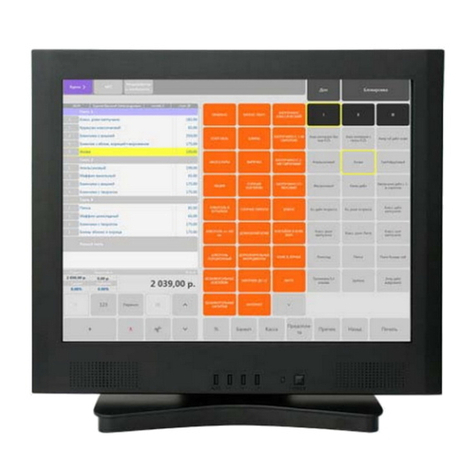
Sinocan
Sinocan T06-15 user manual

Elo Touch Solutions
Elo Touch Solutions ET3201L user manual
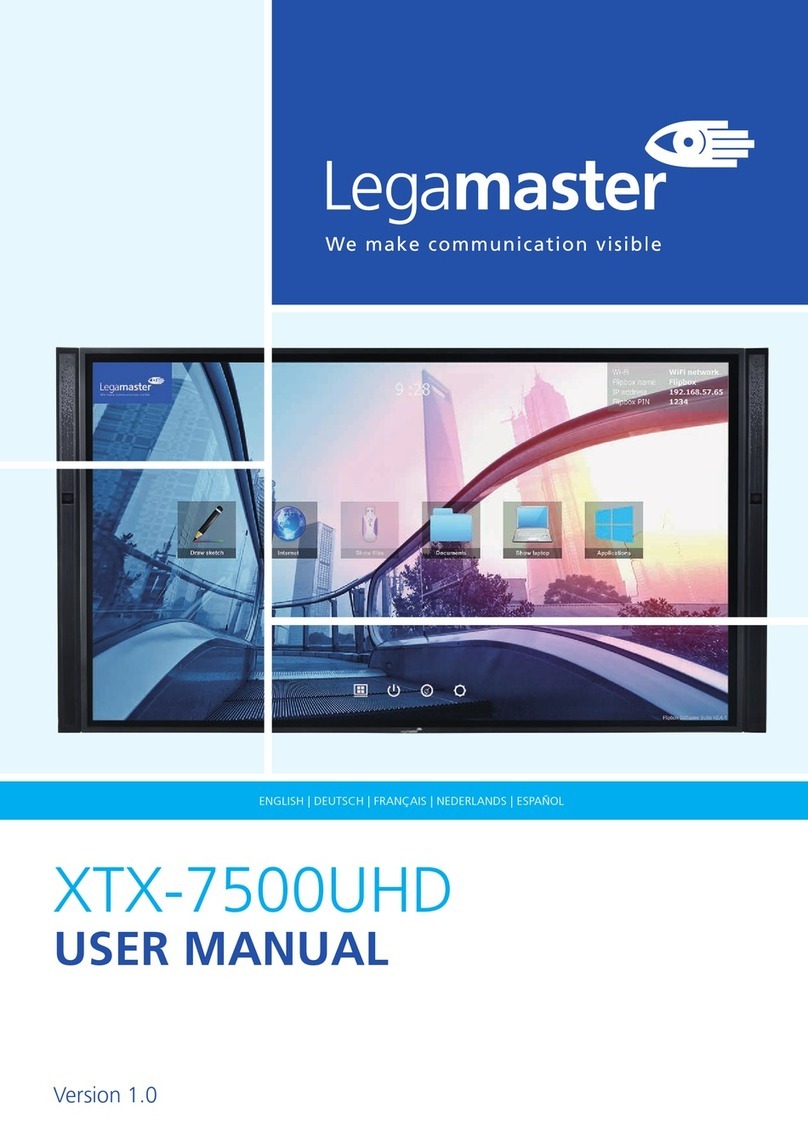
Legamaster
Legamaster XTX-7500UHD user manual
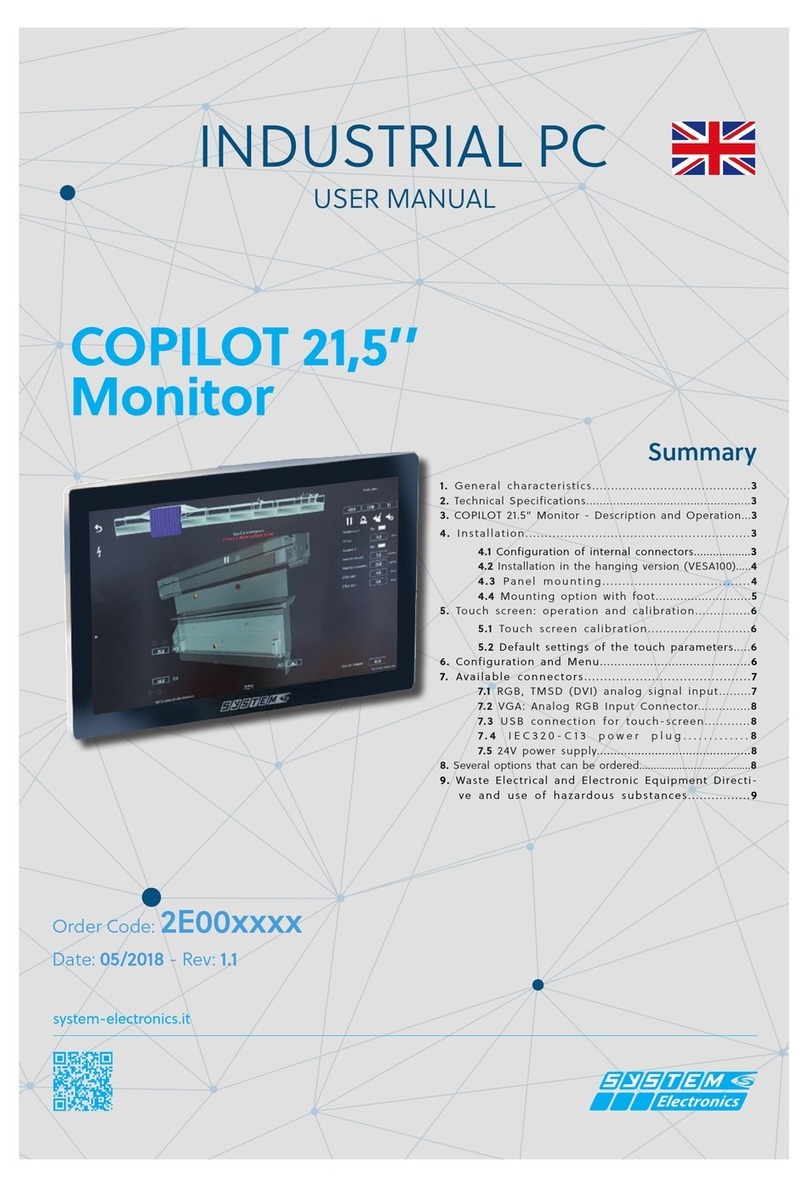
SYSTEM Electronics
SYSTEM Electronics COPILOT Monitor 21,5" user manual

